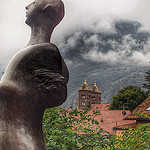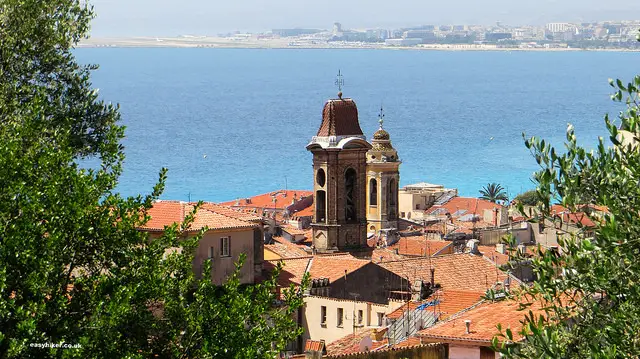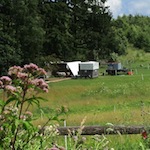Last week, I said that Bari was not a mandatory stop on the Great Italian Tourist Tour. Today, I would like to qualify that a little.
It is true that most printed travel guides refer to Bari only in passing, but they do recommend it as a convenient stopover to a place which has become one of southern Italy’s most popular visitor attractions.
For the purposes of the international tourism trade, Bari is, above everything else, the Gateway To The Trulli.
A Visit to the Trullo Town of Alberobello
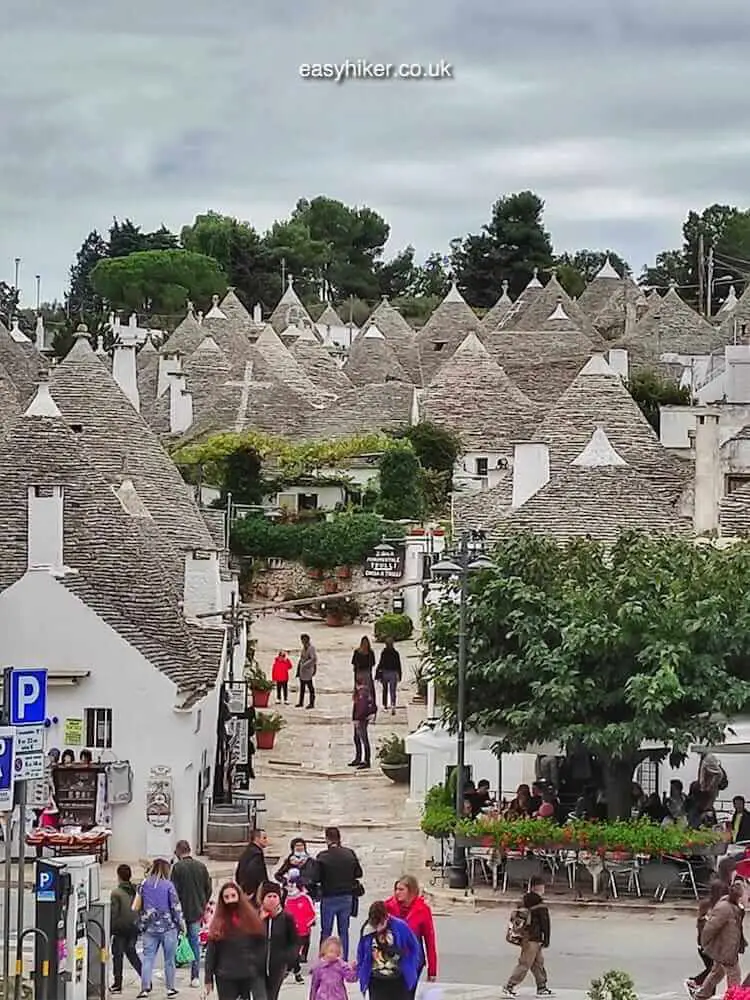
Trulli are so-called dry stone structures – they do not contain any binding agents such as mortar or cement – that farmers in Puglia, the province on the heel of the Italian boot, have built for hundreds of years.
Trulli were mainly used to store grain and agricultural tools, but have occasionally also served as temporary shelters for agricultural workers. You can find them pretty much all over Puglia, but rarely in larger clusters – few people need 20 or 30 tool sheds.
The only place in the province that has large concentrations of these structures is the town of Alberobello, 30 km south of Bari.
What Florence is for Renaissance art, Alberobello is for the humble trullo.
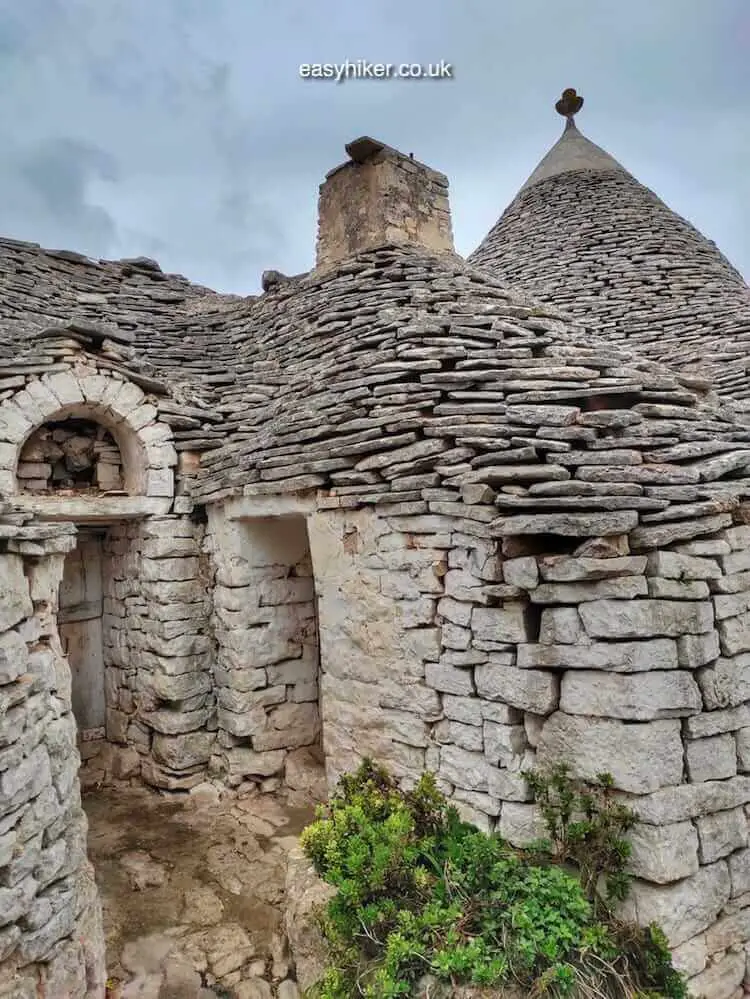
Nobody, however, seemed to pay much notice until the 1980s when local entrepreneurs began to rent out the trulli as novelty tourist accommodations.
At first sight, this was a distinctively odd idea: trulli are tiny and dark places (the door is often the only source of light) with claustrophobically low ceilings.
But for some reason, this odd idea took off.
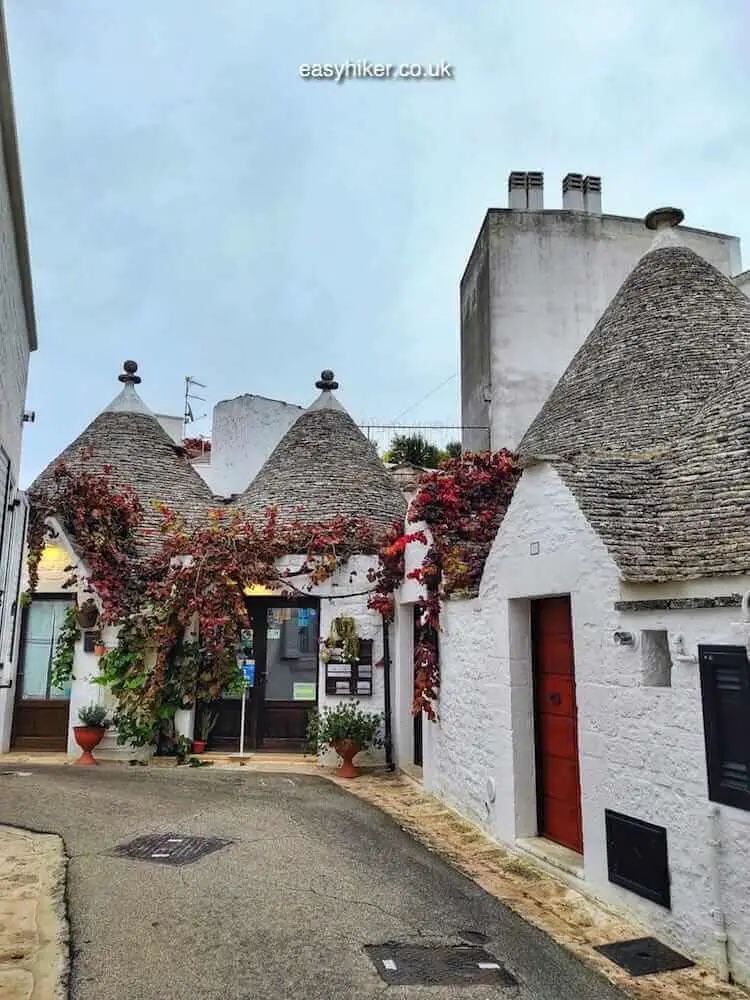
Alberobello’s sudden metamorphosis into a popular visitor attraction was helped in some measure by the UNESCO’s decision to include the trulli in their list of World Heritage Sites, the knighthood for tourist destinations across the world.
According to the UNESCO, Alberobello’s trulli are of medieval origin with roots in prehistoric times. Elsewhere, however, you can read that trulli were in fact rather rare in this area until 200 years ago, since what is today Alberobello (the “beautiful tree”) was largely covered by woodland until about the year 1800.
Neither are these trulli particularly unique: similar huts can be found in the stony regions of eastern Spain and southern France. And although the criteria for World Heritage status may have been broadened somewhat over the years, it is still true that most buildings on the list are large in scale, old and of historical importance. Whereas the trulli are tiny countryside huts, many of which were built only in the last 100 years.
Even the custom of painting stylized drawings on the cone-shaped roofs, sometimes quoted as evidence for the deep roots of the trulli in an age of mysticism and pagan rituals, …
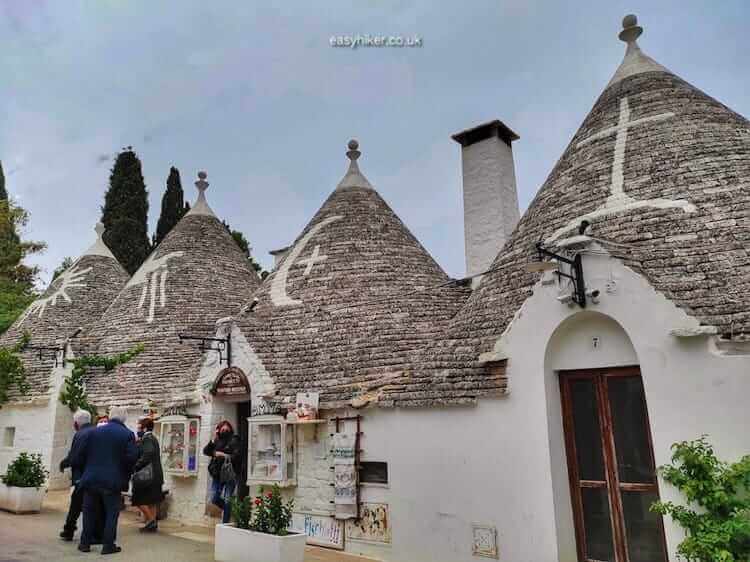
… is actually a fairly modern phenomenon: most of these symbols have been added in the 20th century.
The main reason for their popularity, I suspect, is that the trulli are a perfect site for the age of the selfie: undeniably cute and eccentric in an unchallenging way.
They remind people of houses from the fairy tale concoctions of Hollywood: the homes of Hobbits and the Seven Dwarves.
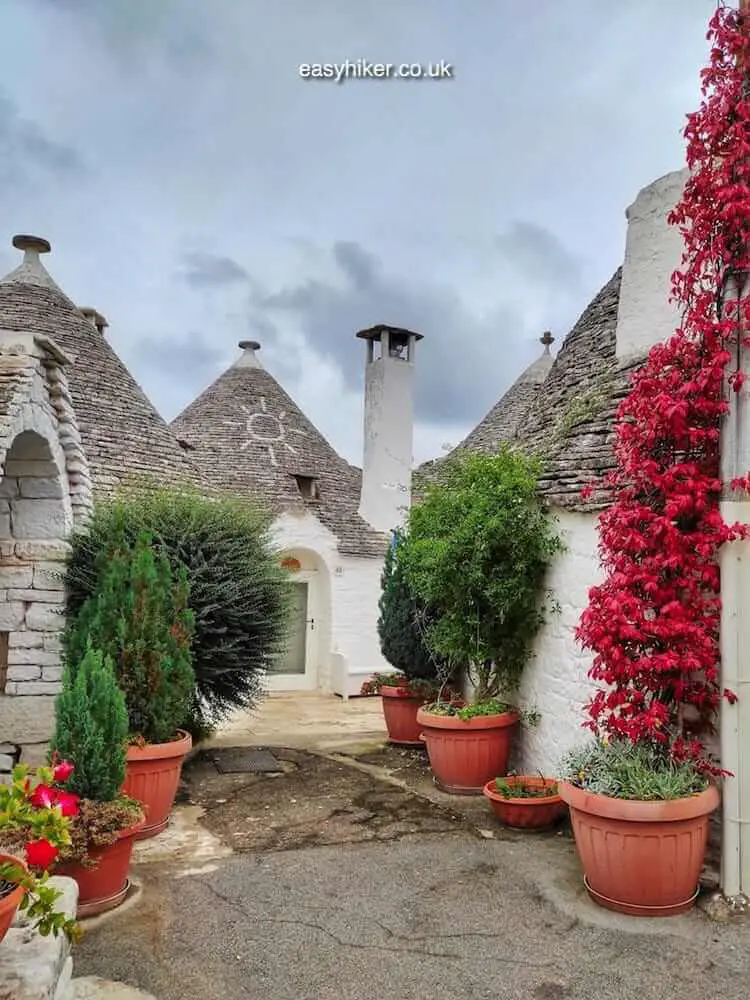
The walking tour we recommend begins near the central bus stop around the corner from Alberobello’s train station.
Walk down Viale Margherita and turn left into Via Piave for the first of the town’s two large concentrations of trulli.
Around Via Piave and Via Cavallotti, you will find mainly residential trulli that are perfectly integrated into the cityscape.
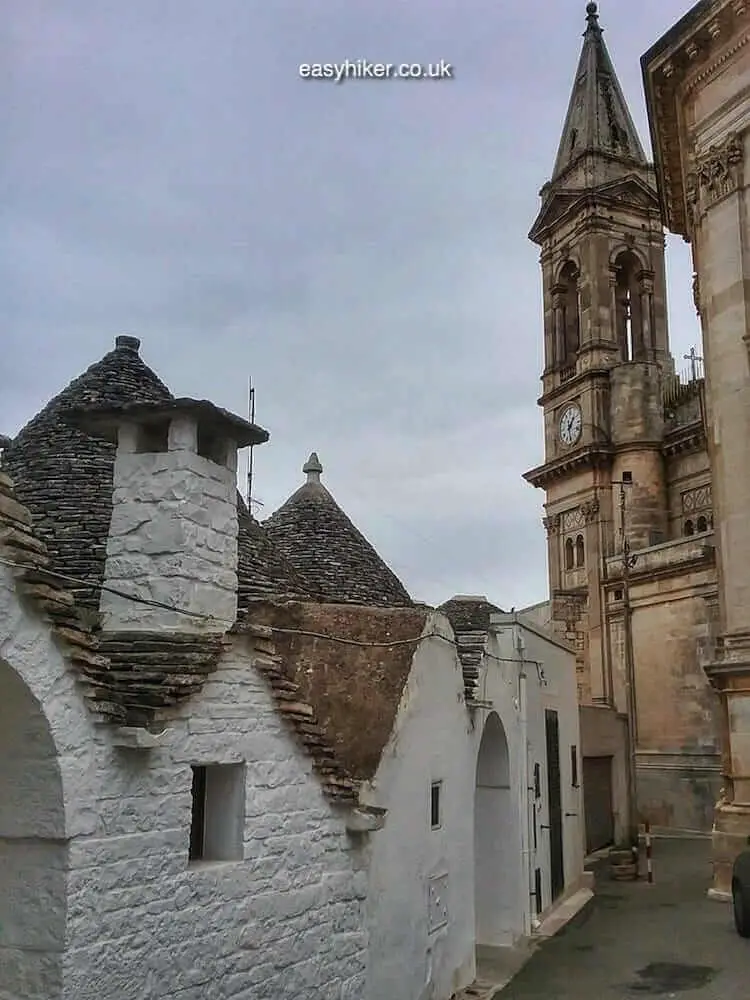
Here and elsewhere in Alberobello, the residential trulli can be easily identified: they are lovingly decorated (like other family homes around the world), …
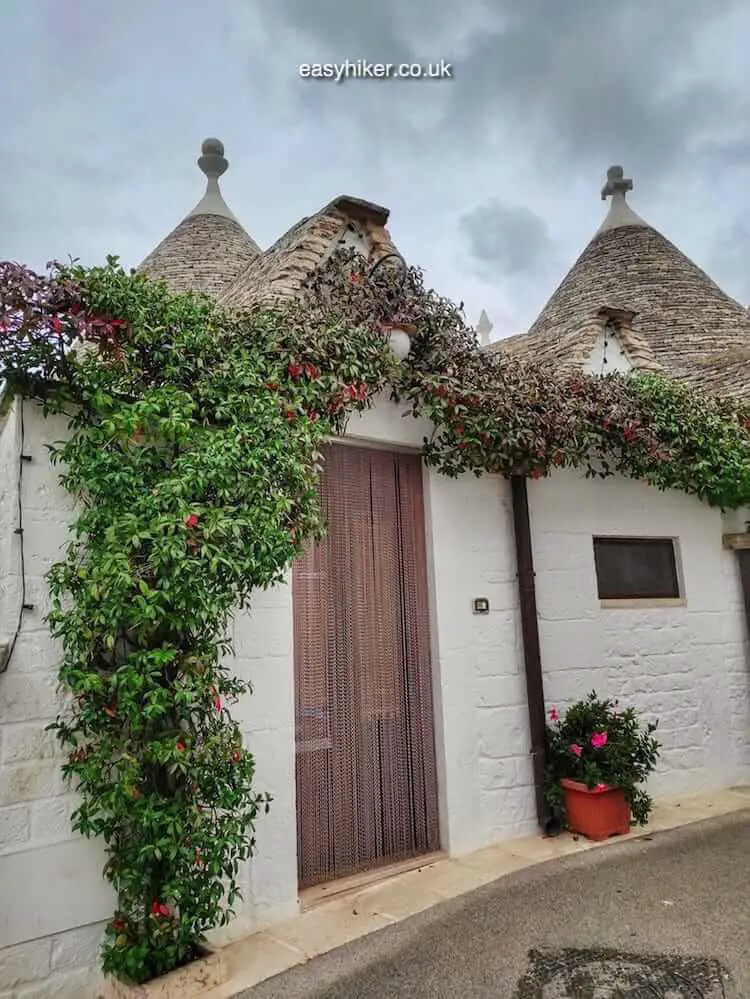
… and are equipped with door bells, while the doors themselves are made of glass or other transparent materials to let as much light in as possible. Many proprietors have also encased their trullo residences in outer stone walls to create a little more space.
When you live in a trullo, every square inch counts.
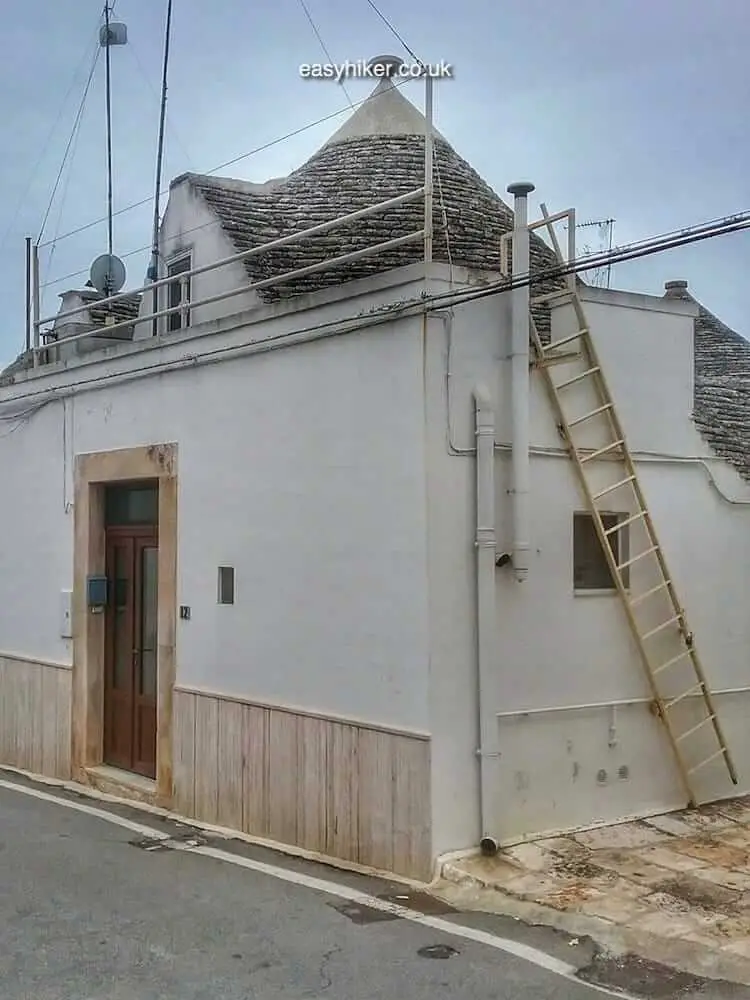
It is also here where you can find the only trullo that has more than a single floor (just about), the Trullo Sovrano on Piazza Sacramento, now serving as a museum.
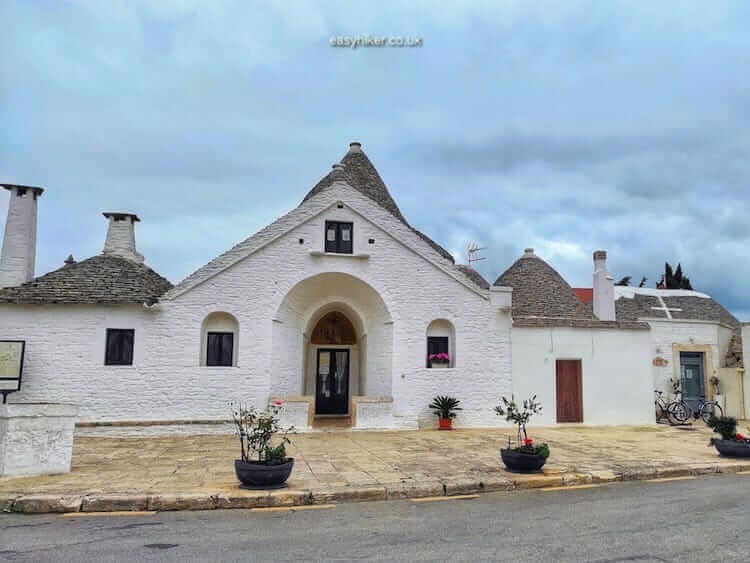
Continue down Via Piave, heading for the Piazza Plebiscito and the viewing platform from where you overlook the entire Rione Monti, Alberobello’s second and even larger concentration of trulli.
Most of the trulli here have been converted into businesses, mainly souvenir stalls, ice-cream parlours and the like, …
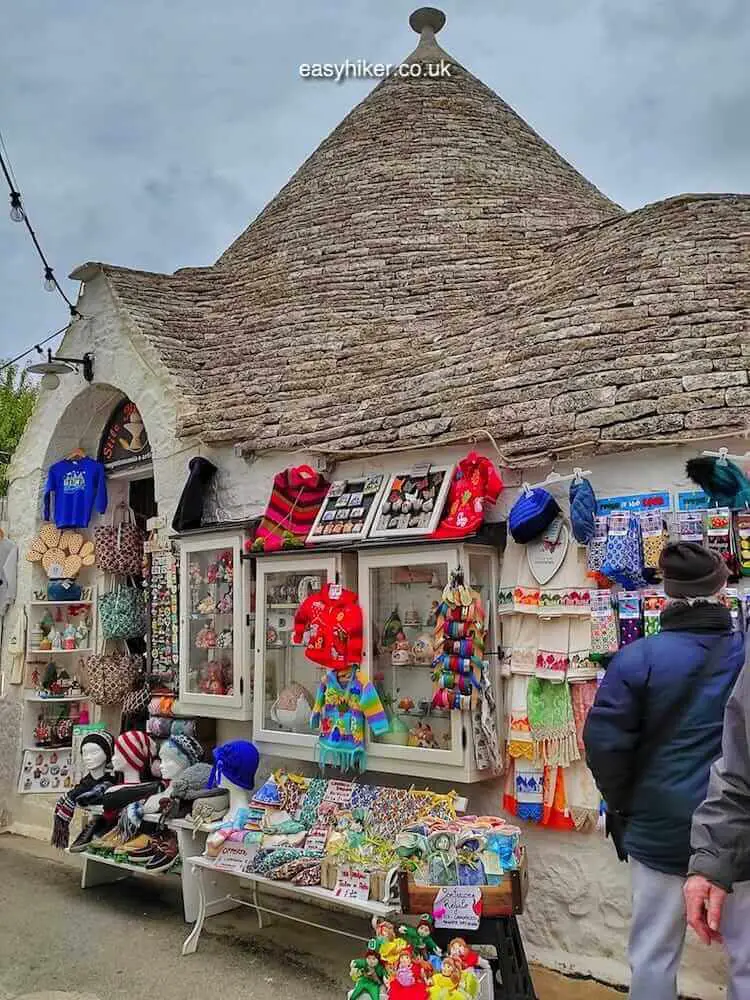
… as you will inevitably notice when climbing the hill in front of you.
There are, however, also residential trulli around – look for them in the side streets – and a trullo church stands at the very top of the hill.
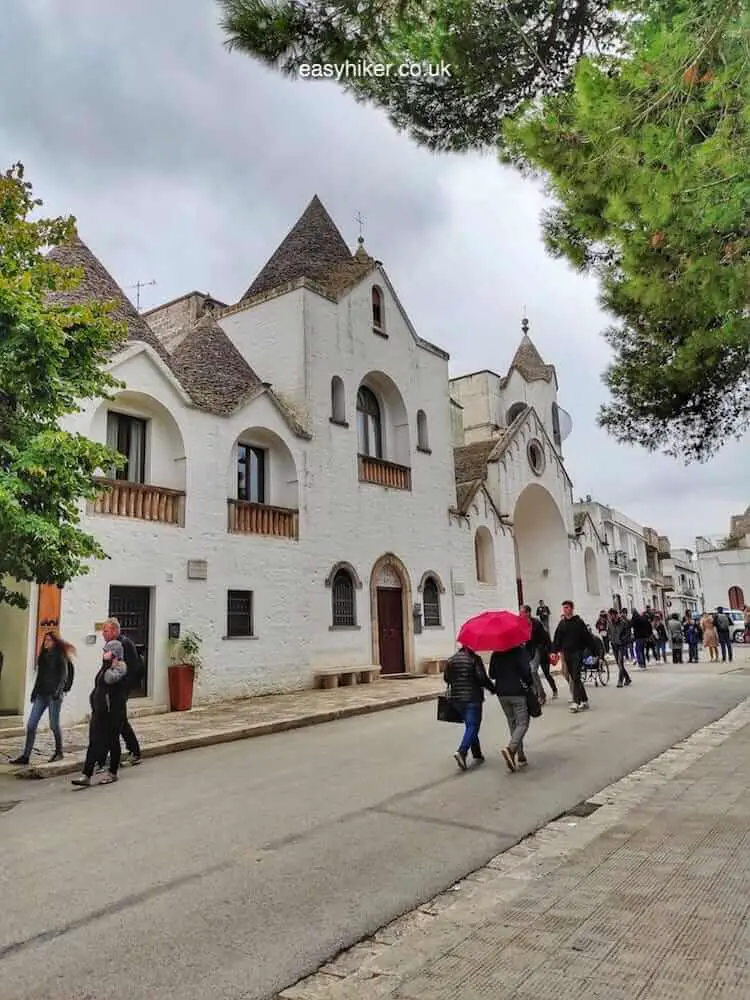
Ultimately, even the grouchiest cynic cannot deny that this neatly arranged trullo town is rather charming and delightful.
It is equally undeniable, however, that the experience also has an element of the surreal. Busloads of tourists from around the world are being ferried into the remote Italian countryside so they can take selfies in front of agricultural tool sheds. Awe-inspiring this is not. We are a long way away from the pyramids.
But surreal or not, most visitors of southeastern Italy will feel that their trip is not complete without a visit to Alberobello (this includes ourselves), so here is some technical advice.
Your trip to Alberobello will most likely lead you through Bari, and the best way to travel from there is by bus.
Buses leave in intervals of 60 to 120 minutes from the back entrance of the station on Via Capruzzi, at a poorly marked stop just in front of a cul-de-sac called Largo Sorrentino.
Be forewarned that getting on the bus can be a bit of a scramble. Everybody lines up in orderly fashion until the bus comes around the corner which is when the mother of all scrums begins.
More than half the people waiting at the stop were left stranded when we visited, and that was in October. Heaven knows what the scene may look like at the height of the tourist season.
The driver, however, immediately ordered two more buses, with a speed that indicated that this was a routine procedure, and everybody got to Alberobello with only the slightest of delays. (In the end, the three buses arrived pretty much at the same time.)
Boarding the bus may be more tricky on the return, however: bear in mind that it is much harder for the driver to quickly requisition a couple of additional buses from the central depot when this depot is 30 km away.
So it may be a good idea to secure yourself a promising position at the stop well before the scheduled departure time. And bring your shoulder pads and football helmet: they might come in handy.
Finally, it must be said that the experience of visiting Alberobello would be even more delightful if there were fewer people around. There is not much you can do about that, however, and it is always worthwhile bearing in mind that we are all part of the problem.
Still, you will have a better time if you can manage to avoid the worst congestion. Don’t go in the main season, and search out the side streets that can be surprisingly empty, even on a busy day.
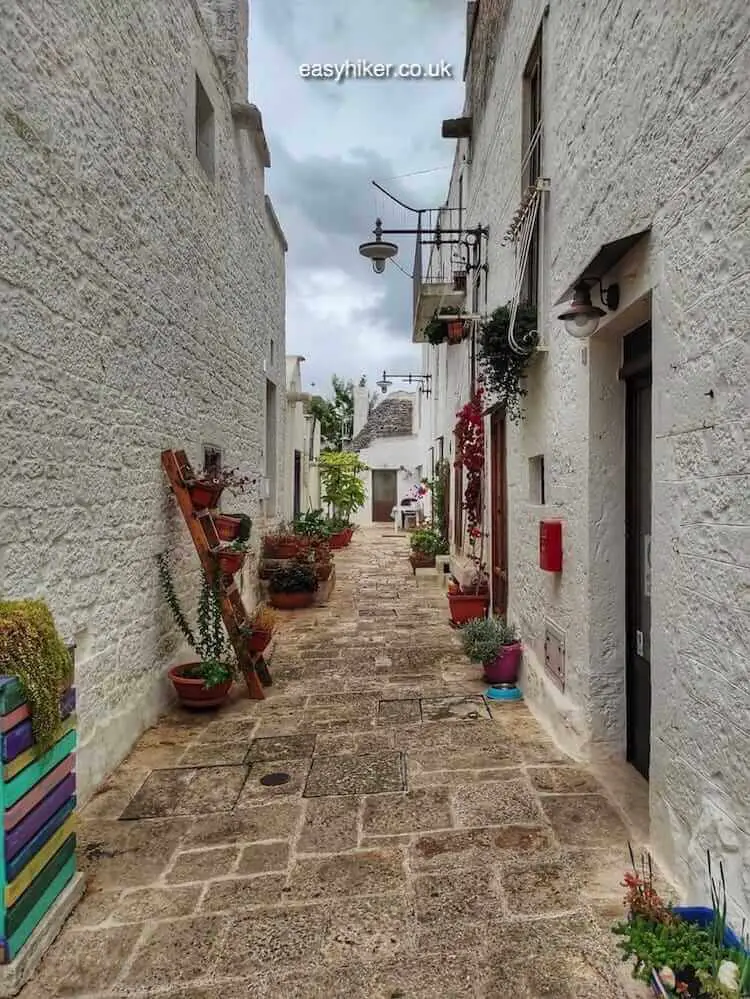
If you go about it in the right way, a visit to the Trullo Town of Alberobello could be fun!



